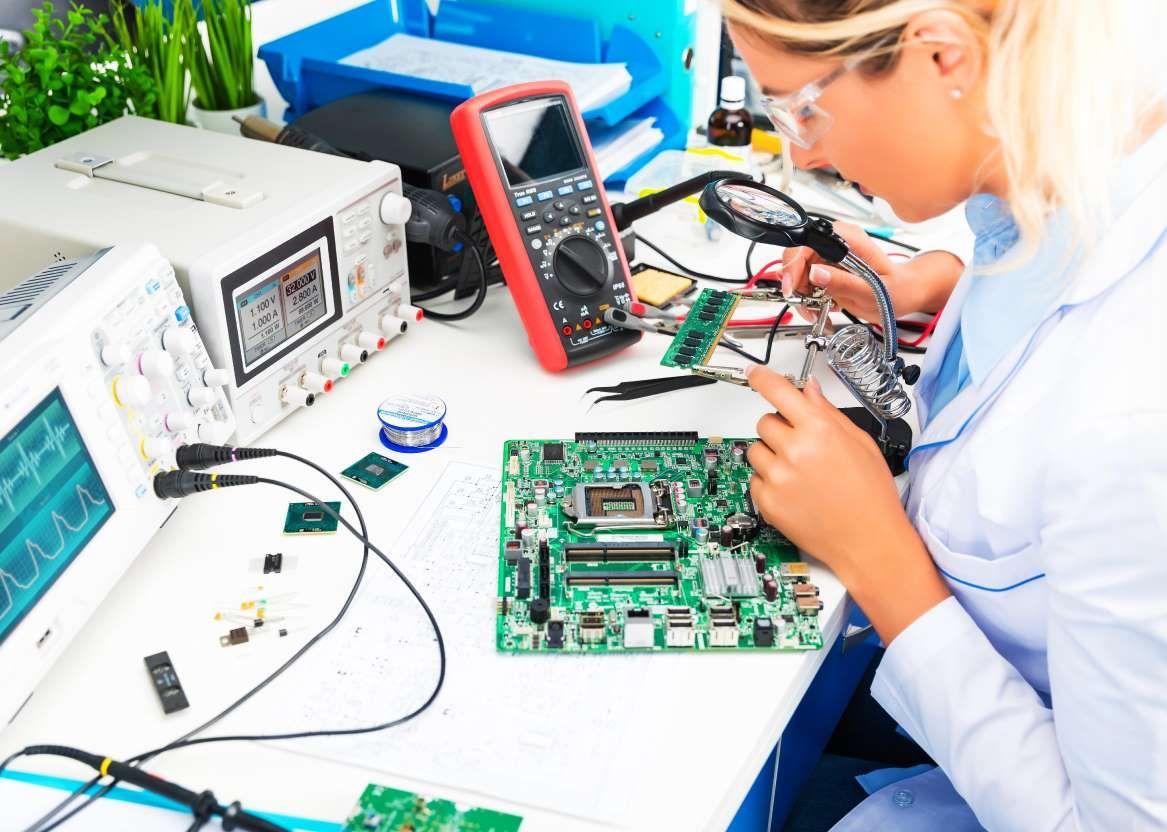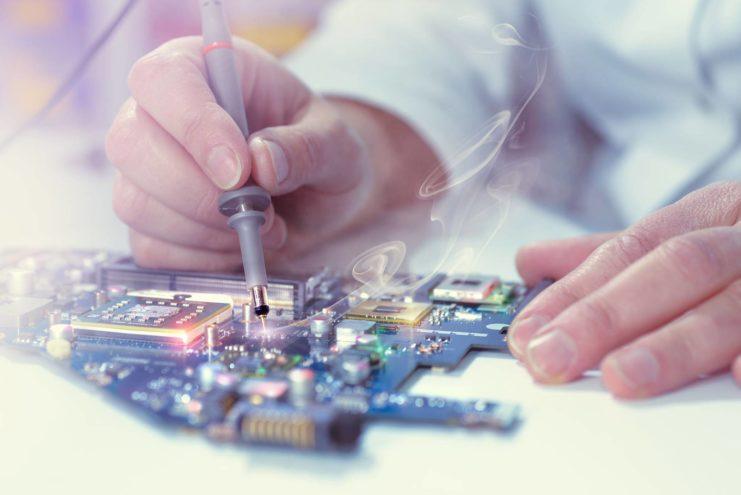In the modern era of communication, software and hardware development services are an integral part of the business world. An essential element of communication devices such as mobile phones and personal computers, hardware forms a significant market segment that is growing now and projected to grow in the future. The estimated total spending for IT devices in 2021 makes USD 705.4bn. In this rapidly evolving sector, our hardware engineering and design services play a crucial role in meeting the increasing demands and complexities of modern technology.
Traditionally, the tech hardware industry embraces computer hardware and technology, peripheral devices, infrastructure, and semiconductors. However, technological novelties are coming up at an incredible speed. New-breed tools and systems, such as IoT, are emerging every day, expanding the demand for the end-to-end development of hardware systems. An expert in software and hardware solutions for various applications, Sirin Software provides professional support with regard to hardware development services.
This article throws a glance at the basic stages of the end-to-end development of hardware systems.
The Stages of Hardware Development Process
Stage 1: Idea
As the engineers embark on the embedded hardware development, they need to decide whether the idea of a new product is worth elaborating on. At this stage, the results of the market studies are discussed along with the purposes and features of the product in order to eventually focus on the two main points:
- The problems that the product is going to solve;
- The price that consumers would be ready to pay for the solution.

Stage 2: Technical specification
A comprehensive technical design requirement helps save time, effort, and cost to a hardware development company. To prevent continual adjustments afterward, a hardware development engineer should create a specification document that covers such main aspects as the purpose of the product, main features, block diagram, environmental conditions, manufacturing requirements, and more.
Stage 3: Architecting the solution
On a general level, this stage of custom hardware development implies decisions taken with regard to the overall design look, the strategies used to build a solution, the type of power supply, the type of connectivity to be used, the firmware design look, and the kind of application design (Mobile App, PC software, or cloud-based application).
At this stage, the system block diagram should be refined and the execution flow should be complemented with more details.
Stage 4: Component selection and design finalization
After the architecture is completed, a hardware development company needs to study each block in the system to select the components and finalize the design, or the application circuit. The decisions to be made at this stage of embedded hardware development include the type of power supply, the kind of power chip that needs to be used, and more. Selecting the proper electronic components will determine the product’s viability.
Stage 5: Creation of a test plan
Testing is a cornerstone of the hardware development process, as it helps evaluate the product’s feasibility and demonstrates whether the ideated hardware will succeed in the field. An efficient testing plan should embrace the following:
- Hardware design validation;
- Software design validation;
- Production level testing.
Stage 6: Design implementation
This is an essential engineering phase in the custom hardware development process that includes hardware, software, firmware, and enclosure design. Here, the architecture is transformed into the design. The specific steps at this stage comprise:
- For hardware: schematic capture, and PCB layout;
- Development of the required MCU firmware and software;
- Enclosure design work.
Stage 7: Concept confirmation, prototype development and testing
By building a prototype, a hardware development engineer can approve the design and check whether there are any issues with the product. Testing a prototype in a simulated environment is the way to get confidence in the design’s performance. If the issues are revealed early, they can be addressed with little expense, time, and effort, which could otherwise grow excessively if a problem shows up at a further stage.

Stage 8: Field trials
Lab testing is important. However, engineers may not always precisely reproduce all the conditions their product will go through in the field. Especially, when it comes to the ways the product is handled by a layman. Unpredicted environmental conditions can likewise have an impact on the hardware systems’ performance. Therefore, the actual operational functionality of the product will become clear only after the field testing.
Stage 9: Final improvement of the developed hardware systems
Once the field trial is completed, the hardware development company should consider received feedback and implement the required improvements. If the field trials demonstrate certain issues, the team should also enhance the testing procedure utilized during the design validation and production testing stage to ensure a flawless product in the outcome.
Stage 10: Hardware systems launch
As soon as the final hardware product has been approved by the developer team, the large-scale production can be prepared. Along with the product itself, the team should keep in mind all the necessary product certifications and documentation, as well as the proper introduction of the product to the target audience.
Conclusion
The world of computing and computer hardware systems is fast-growing and ever-evolving. A breakthrough technology today may become obsolete in a few years as the market keeps on innovating and exciting. Custom hardware development is sought after as never before and expert support in this sphere is hard to overestimate. In this context, our custom electronics development services offer invaluable assistance, providing tailored solutions to meet the dynamic demands of this sector.
Sirin Software, a recognized specialist in the end-to-end development of hardware systems, boasts a huge experience in the industry. Our cutting-edge solutions expand the horizons of opportunities in such spheres as IoT, retail, artificial intelligence, information technology, industrial automation, and more. Both startups and well-established businesses can obtain superior hardware development services with our unrivaled expertise.

